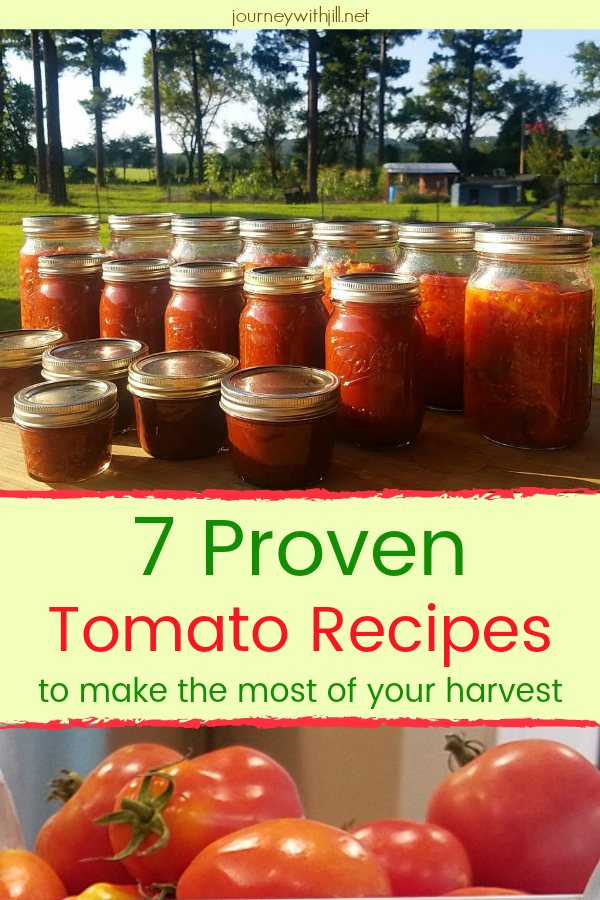Preserving Tomatoes – Making the Most of Your Harvest
Despite the odds, you’ve managed to get a pretty good tomato harvest. Now what? Even if you enjoy fresh tomatoes, you might find yourself with more than you can eat fresh. If this is the case, consider preserving tomatoes for the off-season.
In this episode of the Beginner’s Garden Podcast I share my preferred strategies on preserving tomatoes — most of which even a first-year gardener can do with ease.
Click below to listen or read the post below for the highlights, including the recipes you can use.
How to Start Preserving Tomatoes from Your Garden’s Harvest
I usually grow about fifty tomato plants per year, so I can a lot of tomato products. My goal each year is to can enough of my favorite recipes to last me all year.
But, if you’re like most backyard gardeners, you probably don’t grow that many tomatoes. So, depending on how much you have to preserve, you want to make the most of what you have.
You’ll need to prioritize what to can first. Here are a few factors I use to decide.
What you normally eat. Consider what type of tomato products you typically purchase from the store. Do you eat a lot of spaghetti? Chili? Salsa? Pizza?
What comes in a can. My second priority is to can tomato products that usually come in a can (not a jar) from the grocery store. The lining of those cans contain BPA, a known carcinogen, which is thought to leach at a higher rate thanks to the acidity of the tomato product.
After I’ve decided what factors are most important to me, I begin canning.
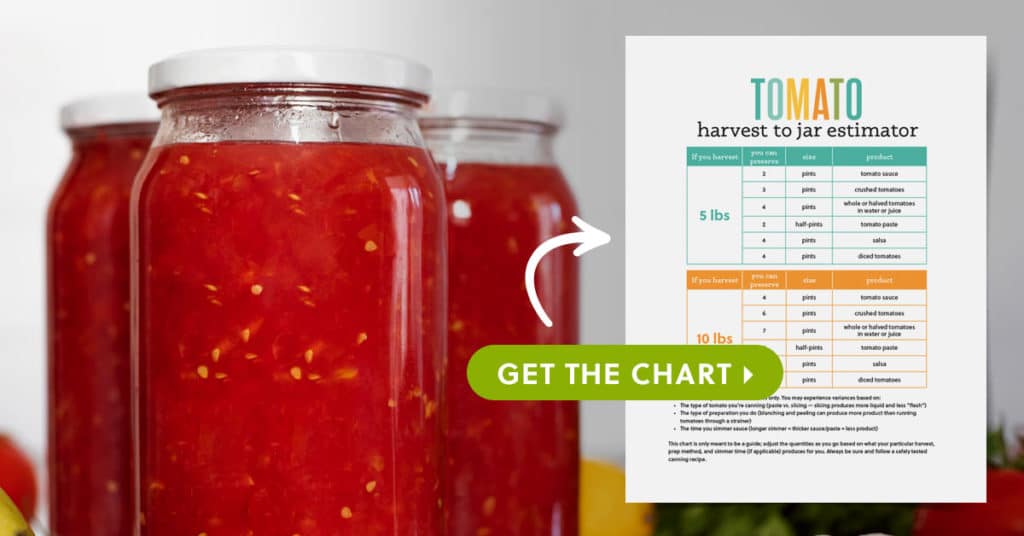
7 Proven Tomato Recipes for Canning
(some links below container affiliate links.)
Tomato Sauce
Tomato sauce is the easiest tomato product to can. Even a beginner can easily water-bath can tomato sauce, and it’s versatile to use in so many ways in the kitchen. You can use it to make your own spaghetti sauce, cook it in chili, make your own pizza sauce, and much more.
I use the Fruit and Vegetable Strainer from my Kitchen Aid Mixer to make sauce quickly and easily. I don’t have to blanch or peel the tomatoes. After the juice is extracted, I simmer it for several hours until it reaches the desired consistency. Once the simmering is complete, I begin the process of canning.
VIDEO: Use Your Kitchen Aid Mixer to Cut the Time it Takes to Prepare Tomatoes for Canning
Get your Kitchen Aid Fruit & Vegetable Strainer Attachment here: (affiliate link)
If you don’t have this attachment, you can extract sauce by blanching, peeling, and crushing (or blending) your tomatoes. It takes longer but produces the same great result.
Tomato Sauce Recipe: Tomato Sauce (water bath or pressure canning) by Melissa K. Norris
Tomato Paste
The next product I can is tomato paste. Processing it uses a similar process as tomato sauce, except you simmer it down much further. The recipe I use also calls for red bell pepper, bay leaves, and garlic for flavor, though sometimes I omit the red pepper if I don’t have it on hand.
The thing to keep in mind is the final product will be about 1/4 of what you start with. For example, if you begin with 5 quarts of juice/sauce, you’ll end up with about 5 half-pints of paste. For many, this can be quite depressing, and it’s an option I wouldn’t recommend if you don’t have a huge amount of excess tomatoes. But, if you do, tomato paste is a great option. I love having tomato paste on hand for lasagna and chili all season.
Recipe: Tomato Paste from Pick Your Own
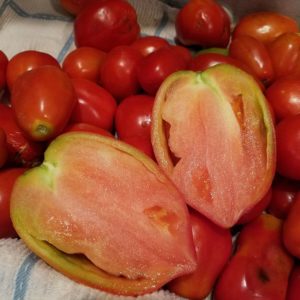
Spaghetti Sauce
My spaghetti sauce starts out as tomato sauce. I process the tomatoes through the Kitchen aid mixer as I do for sauce and paste, but after the sauce has reached the desired consistency, I add the vegetables and simmer for about 30 minutes before I begin canning. Because of all the vegetables, spaghetti sauce does require pressure canning.
Recipe: Spaghetti Sauce for Canning by Common Sense Home
Stewed Tomatoes
Our favorite lasagna recipe calls for stewed tomatoes, so I love to have pints or quarts of it on hand. Like spaghetti sauce, stewed tomatoes does require a pressure canner due to the acidity of the vegetables.
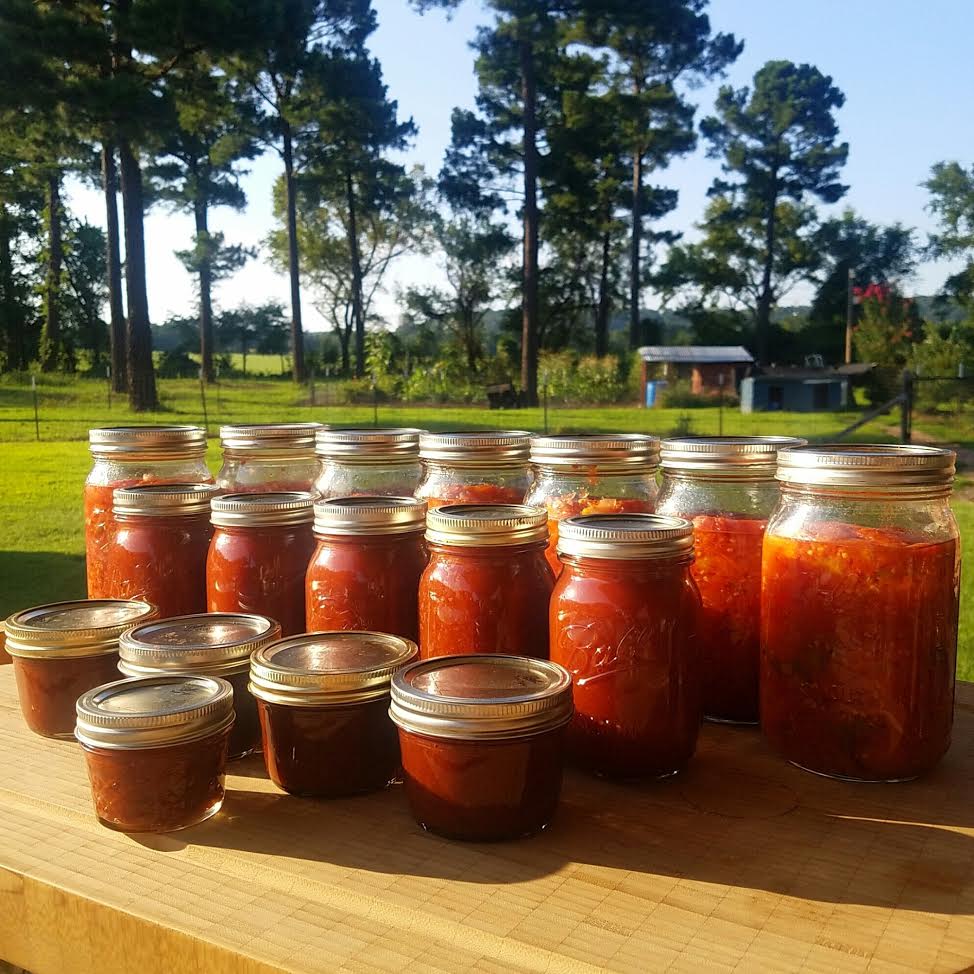
Because stewed tomatoes don’t begin with a sauce base, I have to blanch and peel the tomatoes, which does add time, but it’s definitely worth it.
Recipe: Stewed Tomatoes from Simply Canning
Crushed Tomatoes
If you don’t have enough tomatoes to can at the moment, here’s a trick for you. Stick your tomatoes — whole — in the freezer. Then, when you have enough for a canner load, thaw them in the sink, slip their skins off, and crush them with a potato masher. This is an easy trick to making crushed tomatoes at the end of the season.
But if you know you want to can crushed tomatoes, you don’t have to wait til the end of the season. Just blanch and peel the tomatoes and crush them with a potato masher. Then you can follow the process of water-bath canning them for use in chili, salsa, and other recipes that call for diced tomatoes.
Salsa
It took me six years to find a canned salsa recipe that our family enjoys. The ones we initially tried were just too vinegar-y or had too much lemon or lime juice (necessary for canning) to taste good. But in 2019, thanks to crowd-sourcing from Instagram, I now have TWO salsa recipes we enjoy!
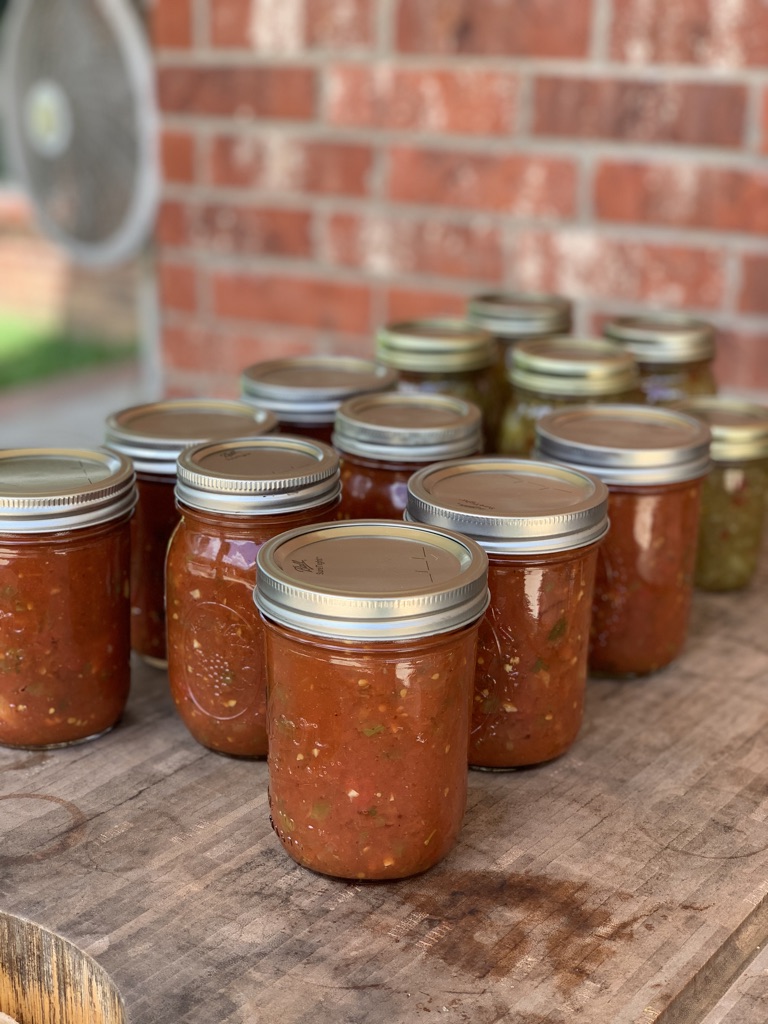
One thing to keep in mind — you cannot can just any salsa recipe safely. Tomatoes are borderline on their pH level, and when you add any type of vegetables, this raises the pH even more, making water-bath canning unsafe unless you include a proper amount of acid. The only way to can homemade salsa safely is to use a tested recipe.
Thankfully, both of the recipes I found have been tested. The first is Annie’s Salsa. It is a good all-purpose salsa that requires more chopping and prep-work but once that’s done, it’s pretty easy. The second is Roasted Tomato-Lime Salsa from the book Foolproof Preserving. The main prep-work here is roasting the vegetables (which I do on my grill). The taste is a more smoky flavor that we love.
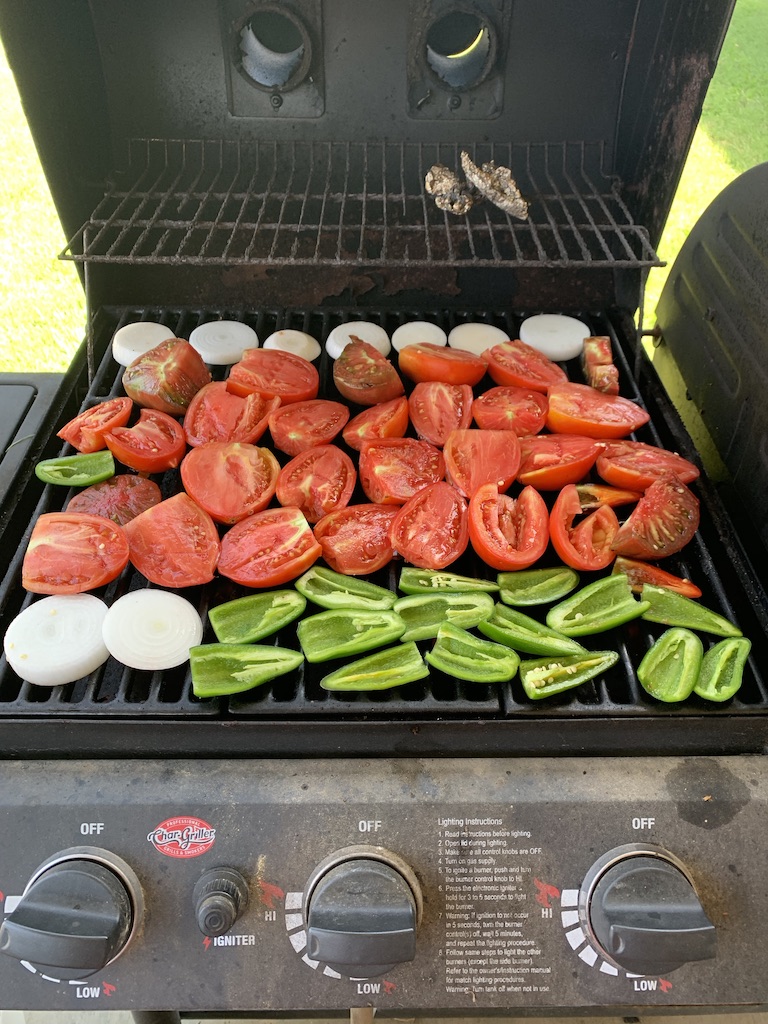
Recipe: Annie’s Salsa
Book: Foolproof Preserving (EVERY recipe I’ve tried in this book has been delicious! This should be a staple in every home food preserver’s bookshelf.)
For me, there’s nothing like a pantry full of tomato products I grew myself (without pesticides) and canned myself (without chemicals). And don’t worry if you don’t have fifty tomato plants to supply your tomato needs all season. But if you do have some extra, I hope this will give you some ideas on how to use them.
I will warn you, although canning is work, it is also kind of addicting. I started out gardening with 1 or 2 tomato plants, and look where I am now! So, you have been warned. 🙂

Additional Tips & Resources:
If you’re a regular listener to the Beginner’s Garden Podcast, you’ve probably heard me talk about how I don’t like fresh tomatoes. And because I don’t eat them that way, I mainly grow only paste tomatoes. As I talked about in a previous episode, using canning or paste tomatoes will save you time because they have more flesh and less juice. But, if you’re using slicing tomatoes, all of what I’m talking about here will still apply; you just may have to simmer some of these recipes longer.
If you’re brand new to canning, I highly recommend this book, The All New Ball Book of Canning and Preserving: (affiliate link)
Do you get overwhelmed with garden planning?

Subscribe here for my best tips to plan your garden in just 7 days -- all for FREE.
Plus, I'll send you my "In the Garden E-mail" on Fridays, periodic updates on garden resources relevant to you, and you'll receive access to my entire bank of free garden downloads!
You are also agreeing to our privacy policy.

